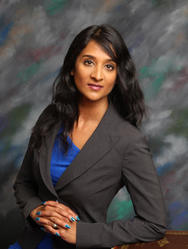It was the murder of a beloved patient that led to a seismic shift in the Women’s HIV Program at the University of California, San Francisco: a move toward a model of trauma-informed care. “She was such a soft and gentle person,” said Dr. Edward Machtinger, the medical director of the program, who recalled how utterly devastated he and the entire staff were by her untimely death.
“This murder woke us up,” he said. ”It just made us take a deeper look at what was actually happening in the lives of our patients.” The Women’s HIV program, explained Machtinger, was well regarded as a model of care for treating HIV patients – reducing the viral load of HIV in the majority of its patients to undetectable levels.
But the staff was clearly missing something. A closer look at the lives of their patients revealed that 40 percent were using hard drugs – including heroin, methamphetamine and crack cocaine, according to Machtinger. Half of them suffered clinical depression, the majority had isolated themselves due to deep shame associated with having HIV, and many experienced violence.
“And way too many of our patients were dying,” he said. “When we did an analysis of why they died, the vast majority of deaths were related to trauma – either directly through murders or indirectly through substance abuse, overdose, depression and suicide.”
His patients were not dying from HIV, he said, “but from a lifetime history of trauma.”
This led the clinic to integrate into its practice the science of adverse childhood experiences, known as ACEs science, which explores the lifetime toll on physical, emotional, social and economic health linked to childhood experiences of everything from physical or sexual abuse to living with an alcoholic parent or witnessing violence outside the home.
ACEs comes from the CDC-Kaiser Permanente Adverse Childhood Experiences Study (ACE Study), groundbreaking research that looked at how 10 types of childhood trauma affect long-term health. They include: physical, emotional and sexual abuse; physical and emotional neglect; living with a family member who’s addicted to alcohol or other substances, or who’s depressed or has other mental illnesses; experiencing parental divorce or separation; having a family member who’s incarcerated, and witnessing a mother being abused.
Subsequent ACE surveys include racism, witnessing violence outside the home, bullying, losing a parent to deportation, living in an unsafe neighborhood, and involvement with the foster care system. Other types of childhood adversity can also include being homeless, living in a war zone, being an immigrant, moving many times, witnessing a sibling being abused, witnessing a father or other caregiver or extended family member being abused, involvement with the criminal justice system, attending a school that enforces a zero-tolerance discipline policy, etc.
The ACE Study is one of five parts of ACEs science, which also includes how toxic stress from ACEs damage children’s developing brains; how toxic stress from ACEs affects health; and how it can affect our genes and be passed from one generation to another (epigenetics); and resilience research, which shows the brain is plastic and the body wants to heal. Resilience research focuses on what happens when individuals, organizations and systems integrate trauma-informed and resilience-building practices, for example in education and in the family court system.
The ACE Study found that the higher someone’s ACE score – the more types of childhood adversity a person experienced – the higher their risk of chronic disease, mental illness, violence, being a victim of violence and a bunch of other consequences. The study found that most people (64%) have at least one ACE; 12% of the population has an ACE score of 4. Having an ACE score of 4 nearly doubles the risk of heart disease and cancer. It increases the likelihood of becoming an alcoholic by 700 percent and the risk of attempted suicide by 1200 percent. (For more information, go to ACEs Science 101. To calculate your ACE and resilience scores, go to: Got Your ACE Score?)
In a gathering of local healthcare agencies following the patient’s murder, Machtinger and his peers identified how they were falling short. “We came away with the realization that [primary care] clinics like ours across the country weren’t resourced or trained or supported to deal with the danger that this woman faced.”
To tackle the problem head on, Machtinger and a national team, including clinicians, academics, advocates and patients with HIV joined forces to identify what works.
“Many people who have experienced trauma often have a hard time with relationships and feeling safe and open with other people,” Machtinger said in a recent webinar on how to implement trauma-informed care into a medical practice. One way toward healing is for them to work with peer-led empowerment groups. That led Machtinger to contact the Positive Women’s Network, an Oakland-based national advocacy organization for women with HIV that trains them to be community activists. Working with the Positive Women’s Network and with input from the clinic’s patients, they created a peer leadership program known as “Butterfly Rising” that was launched in early October 2017.
Hazel Betsey is one of the trainers in Butterfly Rising. She has been an outspoken advocate in the HIV community for decades. But preparing for this new role teaching fellow patients at UCSF’s Women’s HIV Program the nuts and bolts of advocacy opened her eyes to the deep connections between a woman’s history of trauma and being HIV positive.
“The trauma part of it was hard stuff,” said Betsey, reflecting on her week-long training last October. The training is in fact rooted in exploring the role trauma has played in their lives. She and the other trainees are now offering the leadership training to 10 fellow patients who signed up for it.
For these women, making connections between adverse childhood experiences and living with HIV is essential, according to Machtinger.
“When patients understand that childhood and adult trauma underlie many illnesses and unhealthy behaviors, they often stop blaming themselves, feel more self acceptance, and often make progress towards health and well-being,” wrote Machtinger in a May-June 2015 article in the journal Women’s Health Issues.
Betsey agreed, ticking off a list of topic areas the participants dive into including everything from examining vulnerability and risk, exploring their family histories and relationships, recognizing their collective experiences and developing resiliency.
In one exercise, Betsey and the other trainees were asked to look at their family trees and relationships within their extended family. It led her to questions she’d never considered. “My family has a legacy of child abuse and child sexual abuse,” she said. “My cousin told me this; my aunt told me this. Almost every woman in my family had been abused. Looking at that, I thought, ‘Why did that happen? Who wasn’t taking care of these girls?”
The exercise led her to reflect more deeply on her childhood. Betsey said she was the youngest of eight children whose father had left when she was born, leaving her mother busy cleaning houses to supplement welfare checks. “I was able to look at this and realize: I felt unprotected in my family. No wonder!”
Not surprisingly, some of the exercises ushered to the surface feelings that were sometimes overwhelming. “There were six of us and on any given day, all of us would have a range of emotions,” Betsey said. “It would be like, ‘Oh my god, can I leave the room and talk to the clinician?’ There was a clinician there. You’re revisiting trauma from childhood to the present.”
Katy Davis, a trauma therapist and director of the trauma-informed care initiative at the Women’s HIV Program, was the clinician on hand whom Betsey and the other trainees could turn to when the discussion veered into areas that touched a raw nerve. She reassured them that their responses were normal and showed them a number of grounding exercises: “Breathe into the belly, feet on the floor and butt in the chair.”
There were also a lot of other opportunities to vent and loosen the grip of stress through journaling, stretching exercises and coloring books. “I did a lot of coloring,” said Betsey. “I wasn’t checking out. But I got all this nervous energy and wanted to move my hand.”
While she and the other trainees visited difficult terrain, what was remarkable to her was that they came to understand some common themes in their background and were able to do so without having to reveal painful details.
As one example, after Betsey and her peers filled out family history questionnaires, they were shown a timeline from birth to present tacked up on the wall and provided yellow, red, blue and green round stickers representing different adverse childhood experiences. Red dots, for example, stood for physical abuse. Each participant was asked to affix the pertinent colored dots on the timeline to a corresponding question. For example, those who experienced sexual abuse affixed a dot in answer to the question, “At what age were you touched improperly?” explained Betsey.
“I found the results really fascinating,” Betsey said. “What we learned from that as a group is that we were more similar than we realized. We all had experienced the same kind of stuff at the same age, and we had all gone into recovery in our 20s or 30s.”

That exercise and others like it lays the ground work for women who will take the Butterfly Rising training to reframe how they think about their individual situations, according to Naina Khanna, executive director of the Positive Women’s Network. “Part of what we do is help build skills to turn their personal stories into collective narratives,” she said, explaining that it allows the women to feel less isolated. Khanna said that based on input from the trainees, the workshop is now segmented into shorter blocks of time instead of an intensive week-long session.
Machtinger said that the peer leadership program was a logical next step to offer patients who have grappled with their trauma in the clinic’s support and therapy groups and elsewhere. “You cannot just give an adult coping skills for their PTSD and not afford them any opportunities for growth and leadership,” he said, noting that they will be researching how well the program meets patients' needs as part of a larger inquiry into the clinic's transition to a trauma- informed practice. “We really felt like we needed to afford them opportunities for leadership in the community and in the clinic.”
Betsey said she’s excited to pass on the tools she’s learned to fellow patients. At an orientation session in early October about trauma, the response of one of the patients made her feel hopeful. “She was like, ‘I’m already getting teary eyed because I am so looking forward to learning about myself and being with other positive women doing this.’”



Comments (2)